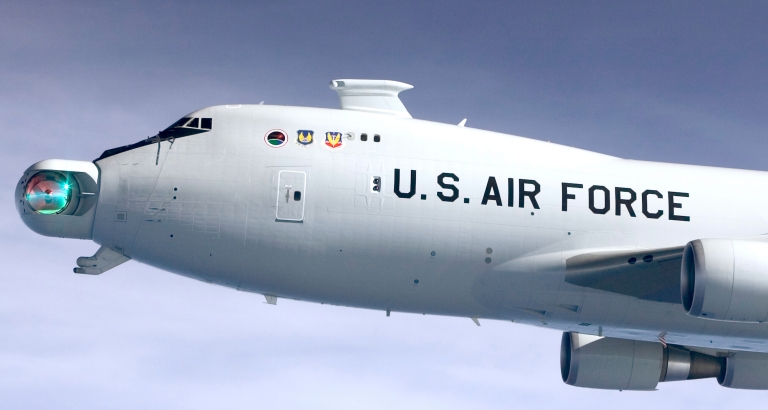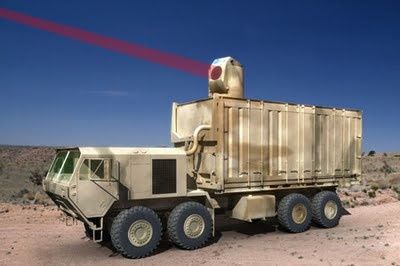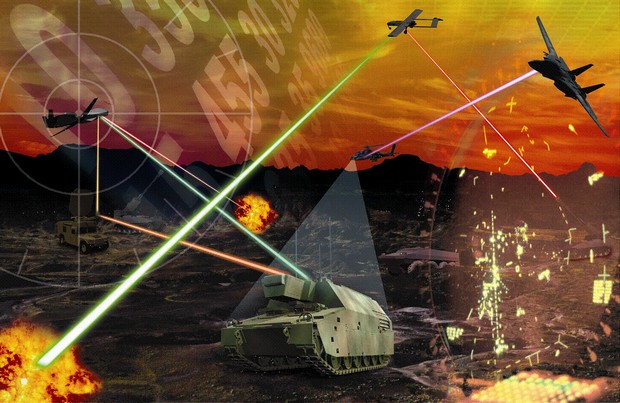 The idea of using lasers to trigger fusion reactions to produce energy dates back many decades, but the idea of using laser fusion for weapons research became more important when underground nuclear testing was curtailed by treaty in the 1990s.
The new laser facility, built between 1997 and 2009 and known as the National Ignition Facility, uses 192 lasers to fire light beams at tiny targets, smaller than peppercorns, filled with hydrogen atoms. The resulting compression and heat are supposed to fuse the atoms into helium, releasing bursts of thermonuclear energy.
The idea of using lasers to trigger fusion reactions to produce energy dates back many decades, but the idea of using laser fusion for weapons research became more important when underground nuclear testing was curtailed by treaty in the 1990s.
The new laser facility, built between 1997 and 2009 and known as the National Ignition Facility, uses 192 lasers to fire light beams at tiny targets, smaller than peppercorns, filled with hydrogen atoms. The resulting compression and heat are supposed to fuse the atoms into helium, releasing bursts of thermonuclear energy.But technical reviews this year of the experiments conducted so far have made it clear that the scientists in charge do not fully understand how the process is working and may not be able to achieve ignition quickly. Scientists at the Lawrence Livermore National Laboratory, in Livermore, Calif., which operates the facility, cite numerous technical advances gained in more than 1,000 experiments, including firing the world’s most powerful laser bursts and developing unsurpassed diagnostic instruments to measure what happens under intense heat and pressure. The review panels cite scientific and technological progress but also say that progress has been slower than anticipated.
Even if ignition is achieved in the laboratory in the next several years, scaling up to a demonstration plant will cost billions and may ultimately show that fusion is not a practical source of power. The fallback argument — that laser fusion allows scientists to simulate conditions at the core of a nuclear explosion and verify the reliability of the nation’s nuclear stockpile without having to test a weapon — is disputed by some experts who think the stockpile will be reliable for decades.
 During a test, the Navy's Laser Weapon System (LaWS), guided by Raytheon's Phalanx Close-In Weapon System sensors, engaged and destroyed four UAV targets flying over water near the Navy's weapons and training facility on San Nicolas Island in California's Santa Barbara Channel, about 120 kilometers west of Los Angeles. The Phalanx—a rapid-fire, computer-controlled, radar-guided gun system—used electro-optical tracking and radio frequency sensors to provide range data to the LaWS, which is made up of six solid-state lasers with an output of 32 kilowatts that simultaneously focus on a target.
During a test, the Navy's Laser Weapon System (LaWS), guided by Raytheon's Phalanx Close-In Weapon System sensors, engaged and destroyed four UAV targets flying over water near the Navy's weapons and training facility on San Nicolas Island in California's Santa Barbara Channel, about 120 kilometers west of Los Angeles. The Phalanx—a rapid-fire, computer-controlled, radar-guided gun system—used electro-optical tracking and radio frequency sensors to provide range data to the LaWS, which is made up of six solid-state lasers with an output of 32 kilowatts that simultaneously focus on a target.
UAV target practice session could be a significant step in a decades-long quest undertaken by the U.S. military and several defense contractors to bring lasers to the battlefield. Raytheon's latest test follows related experiments in 2006 and 2008. In the former, Raytheon used a solid-state laser to destroy a static mortar, whereas in the latter, the laser blew up an incoming mortar shell over land.
Knocking down drones over water is a different matter though. The effect of the moist maritime environment on a laser's ability to propagate has been a nagging question for the technology, says Mike Booen, vice president of Raytheon's Advanced Security and Directed Energy Systems product line. Now that the laser-enhanced Phalanx has demonstrated the ability to find and hit incoming UAVs, the weapon will be installed on an operational Navy test ship for additional testing, he adds. Still, even if the laser system continues to test successfully, such a weapon would not be fully developed for combat before 2016, according to Booen.
 The U.S. military has used Phalanx for decades to shoot down mortars and rockets. The weapon combines a 20-millimeter Gatling gun that fires at a rate of either 3,000 or 4,500 shots per minute, with radar to search for and track targets. The U.S. Navy has used a land-based version of Phalanx in Iraq since 2005. Mounting a laser cannon beside the Gatling gun should extend the range at which incoming ordinance and UAVs can be eliminated. Although Booen says that for security reasons he cannot divulge the distance at which the laser-based systems can shoot down incoming threats (or the UAVs' altitudes during the Navy test), he notes that the military would not be interested in the new laser technology if it could not at least double the range of existing weapons.
The U.S. military has used Phalanx for decades to shoot down mortars and rockets. The weapon combines a 20-millimeter Gatling gun that fires at a rate of either 3,000 or 4,500 shots per minute, with radar to search for and track targets. The U.S. Navy has used a land-based version of Phalanx in Iraq since 2005. Mounting a laser cannon beside the Gatling gun should extend the range at which incoming ordinance and UAVs can be eliminated. Although Booen says that for security reasons he cannot divulge the distance at which the laser-based systems can shoot down incoming threats (or the UAVs' altitudes during the Navy test), he notes that the military would not be interested in the new laser technology if it could not at least double the range of existing weapons.In addition to Raytheon's work, fellow defense contractor Northrop Grumman plans to test its solid-state Maritime Laser Demonstration (MLD) system with the Navy by the end of the year. For the at-sea demonstration, Northrop will power its laser up to 15 kilowatts in order to defend against simulated attacks of a Navy ship by smaller boats. A relatively low-power laser beam could set alight wood or fiberglass hulls, fuel or vulnerable weapons from stand-off distances of a kilometer or more, according to a May 14 Scientific American article. The military hopes that, in addition to extending the range of their weapons, lasers will also improve targeting precision. Another advantage, Booen says, is that lasers require electricity rather than ordinance. As long as there is current, the weapon will not run out of ammo.
DARPA is now unveiling a portable laser weapons system, HELLADS (High Energy Liquid Laser Area Defense System). The new laser application, created by General Atomics Aeronautical Systems with a custom power system from Saft Batteries, will help change the way the American military fights future wars. Current military laser systems are bulky contraptions which are mainly the size of a passenger jet, while the proposed DARPA weapon can fit on the back of a flatbed truck. The 150-kilowatt, solid state laser weapon is strong enough to take down drones or other aerial targets; a prototype is expected to be available by the end of 2012.
 When last we heard from Boeing about the HEL TD (High Energy Laser Technology Demonstrator) program in June 2011, the defense contractor had just finished system integration of key components, including the installation of the beam control system and other hardware on the 8-wheeled, 500-horsepower Oshkosh HEMTT (Heavy Expanded Mobility Tactical Truck).
This week, Boeing said that it's now engaged in the next phase of its contract with the U.S. Army Space and Missile Defense Command, in which it will install a 10-kilowatt solid-state laser in the system, which has been slightly renamed as HEL MD, for High Energy Laser Mobile Demonstrator. Field tests will take place in the coming year to let the high-power SSL system show off its dexterity at acquiring, tracking, and defeating "threat-representative" targets.
When last we heard from Boeing about the HEL TD (High Energy Laser Technology Demonstrator) program in June 2011, the defense contractor had just finished system integration of key components, including the installation of the beam control system and other hardware on the 8-wheeled, 500-horsepower Oshkosh HEMTT (Heavy Expanded Mobility Tactical Truck).
This week, Boeing said that it's now engaged in the next phase of its contract with the U.S. Army Space and Missile Defense Command, in which it will install a 10-kilowatt solid-state laser in the system, which has been slightly renamed as HEL MD, for High Energy Laser Mobile Demonstrator. Field tests will take place in the coming year to let the high-power SSL system show off its dexterity at acquiring, tracking, and defeating "threat-representative" targets. The 10KW capacity of the HEL MD is fairly modest compared with the power levels the Pentagon aims to achieve -- the 100KW level is generally considered the threshold for "weapons-grade" lasers. It is comparable to the 13.3KW that Northrop Grumman achieved earlier this year with its Firestrike demonstrator laser. Boeing said in its announcement this week that the HEL MD could "subsequently" incorporate a more powerful laser.
The 10KW capacity of the HEL MD is fairly modest compared with the power levels the Pentagon aims to achieve -- the 100KW level is generally considered the threshold for "weapons-grade" lasers. It is comparable to the 13.3KW that Northrop Grumman achieved earlier this year with its Firestrike demonstrator laser. Boeing said in its announcement this week that the HEL MD could "subsequently" incorporate a more powerful laser.
laser weapons are still little more than a proof of concept here, a prototype or two there. It may well be another decade or more before they amount to any kind of real presence in the arsenals of the U.S. military.
Lasers as weapons seemed far fetched in the early days of the Star-Wars program, but now with research and development it has many advantages over the current system of defense. A high powered laser can focus its gaze at a moving target at speed, with help from a sophisticated targeting system. Despite the limitations of not disintegrating its target, its power output has passed a milestone of over 105 kilowatts. This gradual rise of output power could be economical for defense in war or better still help trigger the nuclear fusion industry.



No comments:
Post a Comment